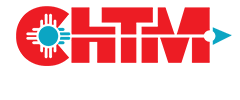Recent News
CHTM Joins NSF's NQVL Pilot Projects
August 9, 2024
OSE PHD, Dr. Xuefeng Li - Wins The Outstanding Interdisciplinary Graduate Programs Award
May 10, 2024
Dr. Ali Rastegari - 2024 OSE Best Dissertation Award Winner
May 10, 2024
2024 OSE Spring and Summer Graduates
May 10, 2024
News Archives
International team’s paper selected as Editor’s Pick in Photonics Research Journal
June 28, 2017 - Sharon Steely

Frédéric Grillot
CHTM faculty member Frédéric M. Grillot is part of an international research team whose paper was recently selected as an “Editor’s Pick” by the Photonics Research Journal (Vol. 5, Issue 4, pp. 315-319m 2017), published by The Optical Society (OSA).
Grillot is a Professor at Télécom ParisTech and a Research Professor with the Center for High Technology Materials (CHTM) at The University of New Mexico. J. M. Sarraute, LCTI, Télécom ParisTech, and COPL, Université Laval in Quebec, Canada, is the corresponding author on the manuscript. The team includes K. Schires, LCTI, Télécom ParisTech; and S. LaRochelle, COPL, Université Laval.
As future optical networks prepare to operate at 100 Gbps and beyond, the development of small footprint optoelectronic devices with high-speed performances is of paramount importance, especially for short-reach communication links such as access and datacenter optical networks.
Although complex modulation formats combined with digital signal post-processing architectures can be used to reach ultra-high modulation bandwidth, the long latency introduced by electronic processing can also result in a severe communication bottleneck. To this end, direct-detection systems implemented with directly modulated lasers (DMLs) can provide a simple and compact solution for the development of low-cost fiber optic communications.
The researchers' paper, “Effects of gain nonlinearities in an optically injected gain lever semiconductor laser,” studies the effects of gain compression on the modulation dynamics of an optically injected gain lever semiconductor laser.
In order to keep increasing data rates, it is necessary to enhance the modulation dynamics of optical transmitters without creating other impairments.
Modulation dynamics can be improved either by the development of novel in-plane semiconductor materials or by using nonlinear architectures such as optical injection-locking (OIL) and gain lever (GL). The work provides selection rules that can be used as manufacturing guidelines for the development of broadband transmitters for short-reach optical networks.
This paper investigates the effects of gain nonlinearities in an OIGL laser. The analysis of the OIGL laser is described using a set of differential rate equations. Calculations show that the gain compression is not necessarily a limiting factor affecting the modulation dynamics of the OIGL laser. Theoretically, a modulation bandwidth four times higher (≈85 GHz) than for the free-running laser operating without a GL may be reached while keeping the amplitude of the modulation response under 10 dB.
This is of key significance for the development of directly modulated broadband optical sources compatible with short-reach communication links.


